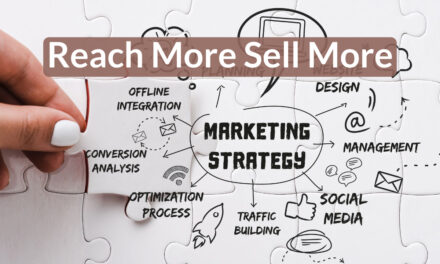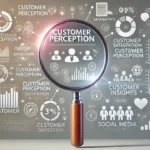Introduction
In today’s fast-paced world, coaches, experts, and consultants are continually looking for ways to streamline their operations, maximize efficiency, and ultimately grow their businesses. One of the most effective ways to achieve this is through automation. By automating key aspects of your business, you can free up time to focus on strategy, innovation, and spending quality time with your loved ones. This blog post will explore the importance of automation for professionals in the coaching, expert, and consulting industries, as well as provide an in-depth look at the various business processes that can be automated and the latest technologies to accomplish this.
1. The Automation Journey: Key Business Processes to Automate
A) Lead Generation
- Social media scheduling tools (e.g., Buffer, Hootsuite): Social media is a powerful lead generation tool, but managing multiple platforms can be time-consuming. By using social media scheduling tools like Buffer or Hootsuite, you can plan, schedule, and monitor your social media content in one place, saving time and ensuring consistent engagement with your audience.
- Content marketing automation (e.g., HubSpot, Marketo): Creating and distributing valuable content is crucial for attracting and converting leads. Content marketing automation tools like HubSpot and Marketo can help you plan, create, and analyze your content, ensuring you reach the right audience with the right message.
- Search engine optimization (SEO) tools (e.g., Ahrefs, SEMrush): SEO is essential for driving organic traffic to your website. Tools like Ahrefs and SEMrush can help you optimize your content, identify keywords, and analyze your competitors, ensuring that you rank higher on search engine results pages.
B) Lead Nurturing
- Email marketing automation (e.g., Mailchimp, ConvertKit): Email marketing remains one of the most effective channels for nurturing leads and maintaining relationships with clients. Platforms like Mailchimp and ConvertKit allow you to automate your email campaigns, segment your audience, and personalize your content based on user behavior, ensuring that your message reaches the right people at the right time.
- CRM systems (e.g., Salesforce, Zoho): Customer relationship management (CRM) systems like Salesforce and Zoho help you manage your leads, clients, and prospects in one central location. By automating tasks such as data entry, lead scoring, and pipeline management, you can streamline your sales process and focus on building relationships.
- Drip campaigns and behavioral triggers: Drip campaigns are automated sequences of emails that guide leads through your sales funnel. By using behavioral triggers, you can tailor these campaigns to each lead’s actions, ensuring that your content remains relevant and engaging.
C) Making Offers and Sales
- Sales funnel automation (e.g., ClickFunnels, Kartra): Sales funnels are essential for guiding leads towards a purchase decision. Tools like ClickFunnels and Kartra can help you design, test, and optimize your sales funnel, automating the process and allowing you to focus on improving your offer and closing deals.
- E-commerce platforms (e.g., Shopify, WooCommerce): If you sell products or services online, e-commerce platforms like Shopify and WooCommerce can simplify the sales process by automating tasks such as inventory management, payment processing, and shipping.
D) Following Up and Customer Retention
- Automated follow-up emails and reminders: Following up with leads and clients is crucial for maintaining relationships and driving repeat business. Automating follow-up emails and reminders can help ensure that you stay top-of-mind and never miss an opportunity to reconnect.
- Loyalty programs and referral systems: Encouraging repeat business and word-of-mouth referrals is essential for long-term success. By automating loyalty programs and referral systems, you can reward your existing clients for their continued support and incentivize them to refer new clients, helping to drive growth and build a loyal customer base.
E) Training and Support
- Learning management systems (e.g., Teachable, Thinkific): As a coach, expert, or consultant, providing high-quality training and support is crucial. Learning management systems (LMS) like Teachable and Thinkific can help you create, deliver, and manage online courses, automating aspects of the training process and allowing you to scale your offerings without sacrificing quality.
- Chatbots and AI-powered customer support (e.g., Intercom, Drift): Providing timely and efficient customer support is essential for maintaining client satisfaction. Chatbots and AI-powered customer support tools like Intercom and Drift can help you automate routine support tasks, freeing up time for you to focus on more complex issues and building stronger client relationships.
2. Overcoming Resistance to Automation
A) Addressing common concerns and misconceptions
- Fear of losing personal touch: Many professionals worry that automation will result in a loss of personal touch in their interactions with clients. However, automation can actually enhance personalization by allowing you to better understand and segment your audience, tailoring your communications to their needs and preferences.
- Perception of high costs: While some automation tools come with significant price tags, there are many affordable options available. Additionally, the time and resources saved through automation often lead to a strong return on investment, making the initial costs worthwhile.
- Complexity and learning curve: Adopting new technology can be challenging, but many automation tools offer intuitive interfaces and robust support resources to help you get started. By investing time in learning and implementing automation tools, you can reap significant long-term benefits.
B) Emphasizing the importance of a human-centered approach
- Combining automation with personalization: While automation can streamline processes and save time, it’s crucial to maintain a human-centered approach. Use automation to enhance personalization, ensuring that your communications and interactions remain authentic and meaningful.
- Focusing on customer experience: Automation should never come at the expense of customer experience. By using automation tools to improve efficiency and responsiveness, you can actually enhance the overall experience for your clients.
- Using automation to enhance, not replace, human interactions: Automation is not meant to replace human interactions but rather to support and augment them. By automating routine tasks, you can free up time and resources to focus on building stronger, more meaningful relationships with your clients.
3. Creating a Roadmap for Automation Success
- Assessing your current processes and identifying areas for improvement: Before diving into automation, take the time to analyze your current business processes and identify areas where automation could have the greatest impact. This will help you prioritize your efforts and ensure that you’re focusing on the right areas.
- Choosing the right tools and platforms for your needs: With countless automation tools available, it’s essential to select the ones that best align with your business goals and requirements. Consider factors such as cost, ease of use, scalability, and integration capabilities when making your decision.
- Establishing clear goals and performance metrics: To measure the success of your automation efforts, it’s important to establish clear goals and performance metrics. This will help you track your progress, identify areas for improvement, and demonstrate the value of automation to stakeholders.
- Continuously evaluating and optimizing your automation efforts: Automation is an ongoing process that requires regular evaluation and optimization. Stay up-to-date with the latest tools and best practices, and don’t hesitate to make adjustments as needed to maximize the effectiveness of your automation strategies. Continuously monitor your performance metrics and gather feedback from your clients to ensure that your automation efforts are aligned with their needs and expectations.
Conclusion
In conclusion, automation offers significant benefits for coaches, experts, and consultants looking to grow their businesses and achieve a better work-life balance. By embracing technology and automating key aspects of your operations, you can streamline processes, improve efficiency, and free up time to focus on what truly matters: building meaningful relationships with your clients, innovating within your industry, and enjoying a fulfilling personal life.
By following the steps outlined in this blog post, you can overcome common barriers to automation adoption and create a roadmap for success. Remember, automation is not about replacing human interactions but rather about enhancing them, allowing you to better serve your clients and scale your business.
Don’t let fear or misconceptions hold you back from embracing automation. By taking a strategic, human-centered approach and continuously evaluating and optimizing your efforts, you can harness the power of technology to liberate yourself and achieve greater success in both your professional and personal life.











